This is something my father taught me in Grade 5 and it's such a very useful tip since then!
Sometimes, there are sizes of paper or canvas that we want to divide in equal parts but have difficulty doing so because the measurements of the paper are not divisible by the number of parts we want to get. Example, we want to divide a 4" x 4" paper into 3 parts, but 4" is not divisible by 3. Or 6" into 5 equal parts. Normally we would reach for our calculator and end up with an infinite X.33333333333 as the answer. But there is no .333333333 visible on our rulers. So, I present to you a very simple technique which, I think, is loosely based on the Complementary Angle Theorem in Geometry... but whatever. You are most welcome to correct me if I'm wrong about that. :)
Here we have a 5" x 5" cardstock that I'd like to divide into 3 equal parts. The problem is, 5 isn't divisible by 3.
The nearest number to 5 that is divisible by 3 is 6 and so, I twist my metal ruler so that the 0" mark is on the left edge, and the 6" mark is on the right edge like so:
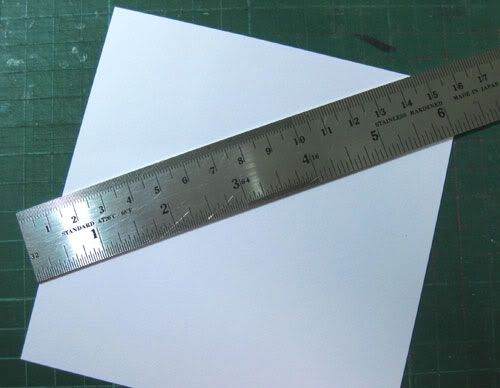 6" divided by 3 parts is equal to 2" and so I mark my first part at 2" with my trusty No. 2 Mongol pencil
6" divided by 3 parts is equal to 2" and so I mark my first part at 2" with my trusty No. 2 Mongol pencil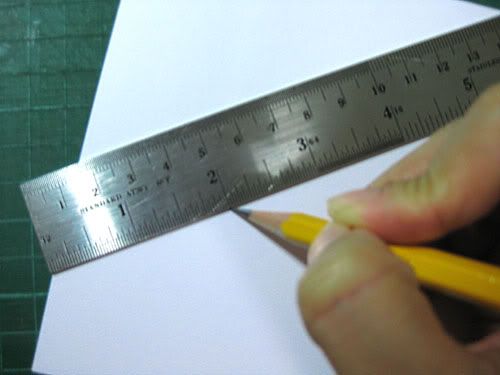 ... and the second mark at 4"
... and the second mark at 4"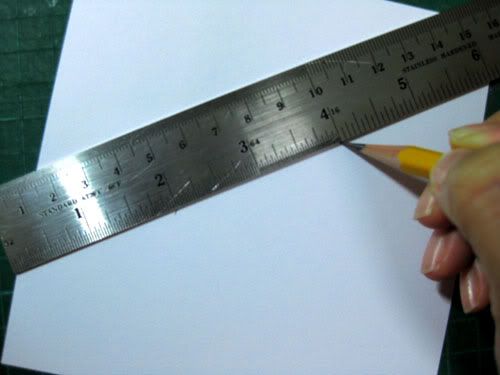 Well, assuming your paper is a true square, meaning, the corners are 90 degrees to each other, you may easily use your T-square and draw your first line based on the mark you made. If not a true square, your lines will be askew. Here I'm using a tiny T-square I bought from NBS. It's only Php28.
Well, assuming your paper is a true square, meaning, the corners are 90 degrees to each other, you may easily use your T-square and draw your first line based on the mark you made. If not a true square, your lines will be askew. Here I'm using a tiny T-square I bought from NBS. It's only Php28.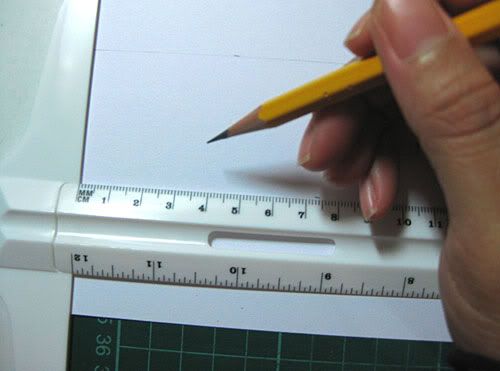 And voila! You have a 5" paper divided into 3 equal parts without your calculator.
And voila! You have a 5" paper divided into 3 equal parts without your calculator. 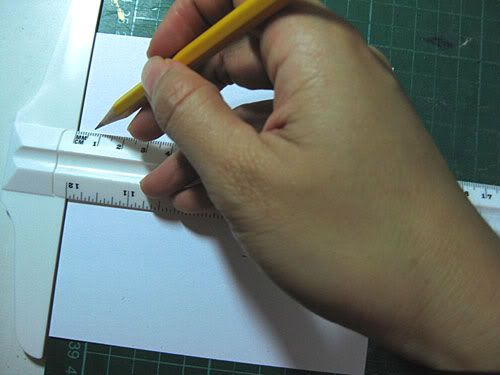


1 comments:
Thank you for posting this to remind me how it is done. I learned it long ago and as a quilter this technique is helpful when drafting blocks
Post a Comment